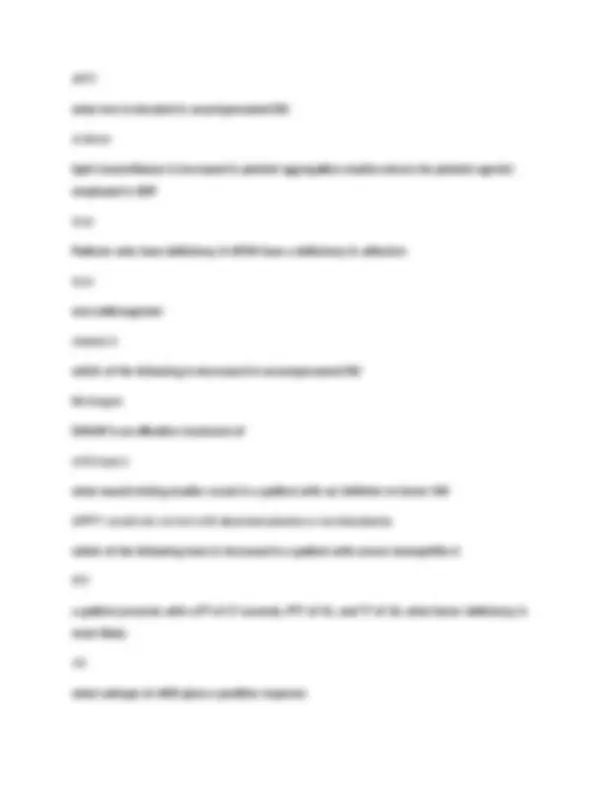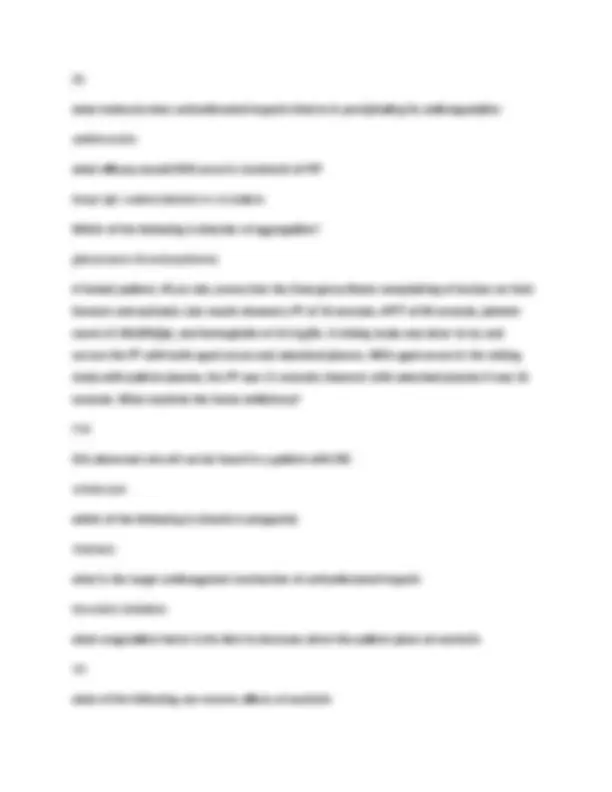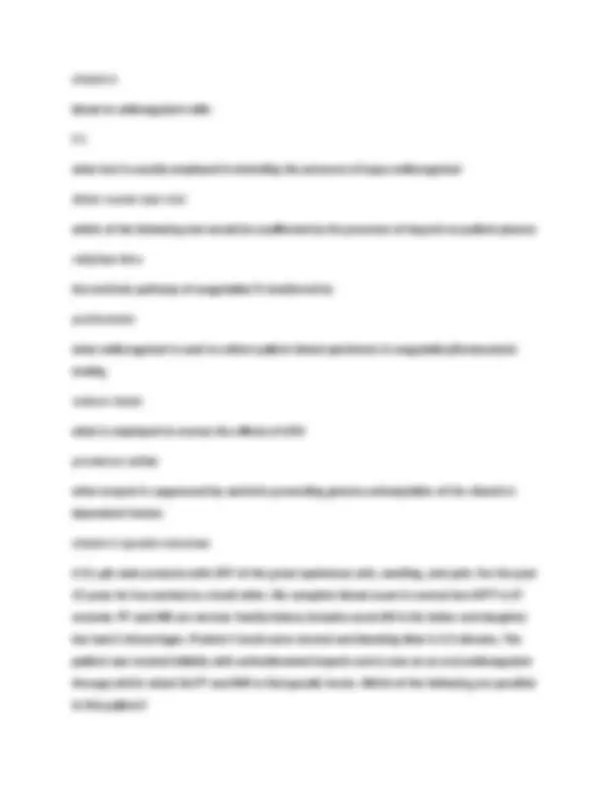





Study with the several resources on Docsity

Earn points by helping other students or get them with a premium plan


Prepare for your exams
Study with the several resources on Docsity

Earn points to download
Earn points by helping other students or get them with a premium plan
Community
Ask the community for help and clear up your study doubts
Discover the best universities in your country according to Docsity users
Free resources
Download our free guides on studying techniques, anxiety management strategies, and thesis advice from Docsity tutors
2025/2026 MMSC 223 Hematology Exam III Actual Questions with 100% Correct Exam GRADED A2025/2026 MMSC 223 Hematology Exam III Actual Questions with 100% Correct Exam GRADED A2025/2026 MMSC 223 Hematology Exam III Actual Questions with 100% Correct Exam GRADED A2025/2026 MMSC 223 Hematology Exam III Actual Questions with 100% Correct Exam GRADED A2025/2026 MMSC 223 Hematology Exam III Actual Questions with 100% Correct Exam GRADED A2025/2026 MMSC 223 Hematology Exam III Actual Questions with 100% Correct Exam GRADED A2025/2026 MMSC 223 Hematology Exam III Actual Questions with 100% Correct Exam GRADED A2025/2026 MMSC 223 Hematology Exam III Actual Questions with 100% Correct Exam GRADED A2025/2026 MMSC 223 Hematology Exam III Actual Questions with 100% Correct Exam GRADED A
Typology: Exams
1 / 7

This page cannot be seen from the preview
Don't miss anything!




A prolonged PT, APT, TT, undetectable fibrinogen by the class method would be seen in afibrinogenemia in this sex-linked recessive disorder, a common clinical finding is hemarthrosis, normal platelet count, normal RIPA hemophilia A In this type of vWD, pt count is normal, PTT is prolonged, vwF antigen is very low or absent, RIPA is absent and all vWF multimers are absent: type 3 which of the following is recognized as viable treatment for TTP plasma exchange all of the following may be seen in HUS decreased reticulocyte count all of the following are associated with HELLP syndrome except: absence of schistocytes In this rare recessive disorder, patients are missing the radius bone and present with an elevated WBC count and decreased platelet count TAR syndrome In this syndrome platelets are lacking dense granules, and present with oculocutaneous albinism, bleeding gums, and excessive bleeding after surgery: hermansky-pullak
which TEG parameter should let the clinical know a platelet transfusion is indicated decreased MA in this autosomal disorder clot extraction is abnormal glanzmanns thromboasthenia what is considered normal range for bleeding time 2 - 9 minutes which of the following disorders charactered by lack of alpha granules gray platelet test measured for platelet plug to occlude the area PFA- 100 When running TEG, what reagent will be unemployed in the test system for a pt on unfractionated heparin? Heparinase all of the following coagulation factor are measured in the prothrombin complex time test except Factor 13 (XIII) what does ISI stand for international sensitivity index all of the following are measured by the APTT except Factor 7 (VII) This screening test for factor V involves adding a standard amount of activated protein C for both patient plasma and normal plasma
2b what molecule does unfractionated heparin bind to in precipitating its anticoagulation antithrombin what efficacy would IVIG serve in treatment of ITP keeps IgG coated platelets in circulation Which of the following is disorder of aggregation? glanzmanns thromboasthenia A female patient, 45 yrs old, comes into the Emergency Room complaining of bruises on their forearm and epistaxis. Lab results showed a PT of 16 seconds, APTT of 30 seconds, platelet count of 140,000/μL, and hemoglobin of 14.4 g/dL. A mixing study was done to try and correct the PT with both aged serum and adsorbed plasma. With aged serum in the mixing study with patient plasma, the PT was 11 seconds; however with adsorbed plasma it was 16 seconds. What could be the factor deficiency? FVII this abnormal red cell can be found in a patient with DIC schistocyte which of the following is vitamin k antagonist Warfarin what is the target anticoagulant mechanism of unfractionated heparin thrombin inhibition what coagulation factor is the first to decrease when the patient place on warfarin VII what of the following can reverse affects of warfarin
vitamin k blood to anticoagulant ratio 9: what test is usually employed in detecting the presence of lupus anticoagulant dilute russels viper test which of the following test would be unaffected by the presence of heparin to patient plasma retipilase time the extrinsic pathway of coagulation if monitored by prothrombin what anticoagulant is used to collect patient blood specimens in coagulation/hemosstasis testing sodium citrate what is employed to reverse the effects of UFH protamine sulfate what enzyme is suppressed by warfarin preventing gamma carboxylation of the vitamin k dependent factors vitamin K epoxide reductase A 51 y/o male presents with DVT of the great saphenous vein, swelling, and pain. For the past 15 years he has worked as a bank teller. His complete blood count in normal but APTT is 37 seconds. PT and INR are normal. Family history includes acute MI in his father and daughter has had 2 miscarriages. Protein C levels were normal and bleeding time is 5.5 minutes. The patient was treated initially with unfractionated heparin and is now on an oral anticoagulant therapy which raised his PT and INR to therapeutic levels. Which of the following are possible in this patient?
In HIT, unfractionated heparin complexes with PF What is the target of Coumadin in enacting its anticoagulatn effect? Vitamin K epoxide reductase